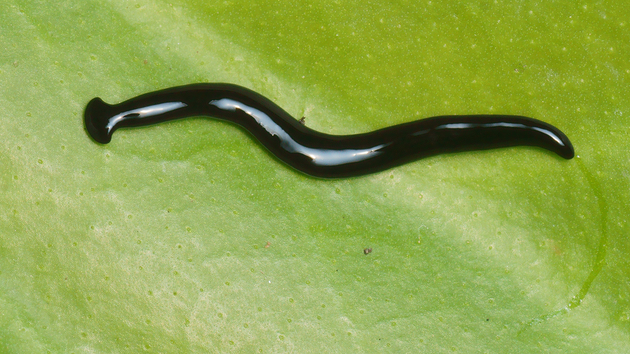Top 10 horrible animals that land in France, break up!
Animals deserve all our affection and we know that you have to be nice with insects, but sometimes it’s more difficult than expected. With all the dangerous and invasive critters that have been arriving in France for several years, we just want to lock ourselves up at home with a spray of mosquito repellent.
1. Corn rootworm
The corn rootworm is a cute yellow and green insect that spends its days eating the roots of corn plants, which is rather annoying for the nice people who grow them. This critter comes originally from North America but arrived in Europe in the early 2000s. It is considered an invasive species and we come across it more and more in France (well, only if we walk in cornfield).
2. Douglas-fir needle midges
In 2015, people who work in finding insects discovered a new insect on French soil: Douglas-fir needle midges. It looks like a little red fly that lays larvae on the buds of Douglas fir trees and these poor trees have a hard time resisting them. The larvae nest in the needles and they eventually fall off. In years of heavy infestations, more than 75% of Douglas fir needles may be attacked.
3. Asian flatworms
A new species of flatworms from Asia called humbertium covidum has just been identified in France and this is not good news. There are already many invasive species of tapeworms in France and the latter is even more difficult to detect because these worms are only 30 millimeters. We do not yet know how dangerous they are for the environment, but scientists assure that they represent an ecological threat.
4. The tiger mosquito
Until the 1980s, the tiger mosquito was only found in Asia, but today it is present on all continents (except Antarctica, quite logically). It’s ugly, it’s bigger than our familiar mosquitoes, and it transmits a bunch of really disgusting diseases.
5. The Asian hornet
We have been hearing about the Asian hornet for several years and since 2020, it has officially colonized the whole of metropolitan France. It is very dangerous for the local fauna, in particular the bees, but also for the human being. Indeed, a bite from this insect in a sensitive area, the mucous membranes for example, can cause an allergic shock followed by death. Not fun.
6. Chinese ladybugs
There are plenty of cute but naughty animals and the Asian ladybug is one of them. Poor thing, she doesn’t realize that she is exterminating defenseless animal species… And yet. These ladybugs were imported in the 80s to fight against the proliferation of aphids but the geniuses who had this idea somewhat underestimated its reproduction speed. In recent years, hundreds of clouds of Asian ladybugs have been seen in the sky. It’s crawling.
7. The electric ant, a stylish name for an unfriendly creature
We had so far escaped these terrifying ants from South America, but unfortunately, a first colony has been identified in Toulon. Electric ants, also called “little fire ants”, are an invasive species that threaten biodiversity: they are able to form what are called “supercolonies” that can extend over hundreds of kilometres. Their bite is fatal for small animals such as birds or rodents and can be very painful for humans (the pain remains for more than three hours).
8. Siluriforms, the most disgusting of fish
Siluroforms include catfish and catfish, ugly and nasty animals. They eat everything and anything, from birds to snakes or even their own kind if they are a little weak. Catfish can be several meters long and sometimes attack humans. Originally absent in France, this species would have spread throughout the country by escaping from the basins of the Natural History Museum in Paris around 1860 and reaching the sewers. It’s hard to know if this rumor is true but we hope because it’s an incredible story.
9. The schistosomiasis, a worm carrying a serious disease
Bilharziasis is a disease that normally occurs only in tropical regions. The problem is that the worms carrying this disease begin to acclimatize to French temperatures; these schistosomiasis were spotted in Corsica a few years ago. It lodges in freshwater molluscs, which pollutes the water and it is by bathing in this water that one can fall ill.
10. The Japanese beetle
The Japanese beetle has not yet been detected in France but we must remain vigilant because this destructive insect risks entering and ravaging our crops. It is already present in Switzerland and Italy and a hundred plant species are threatened by its appetite.

